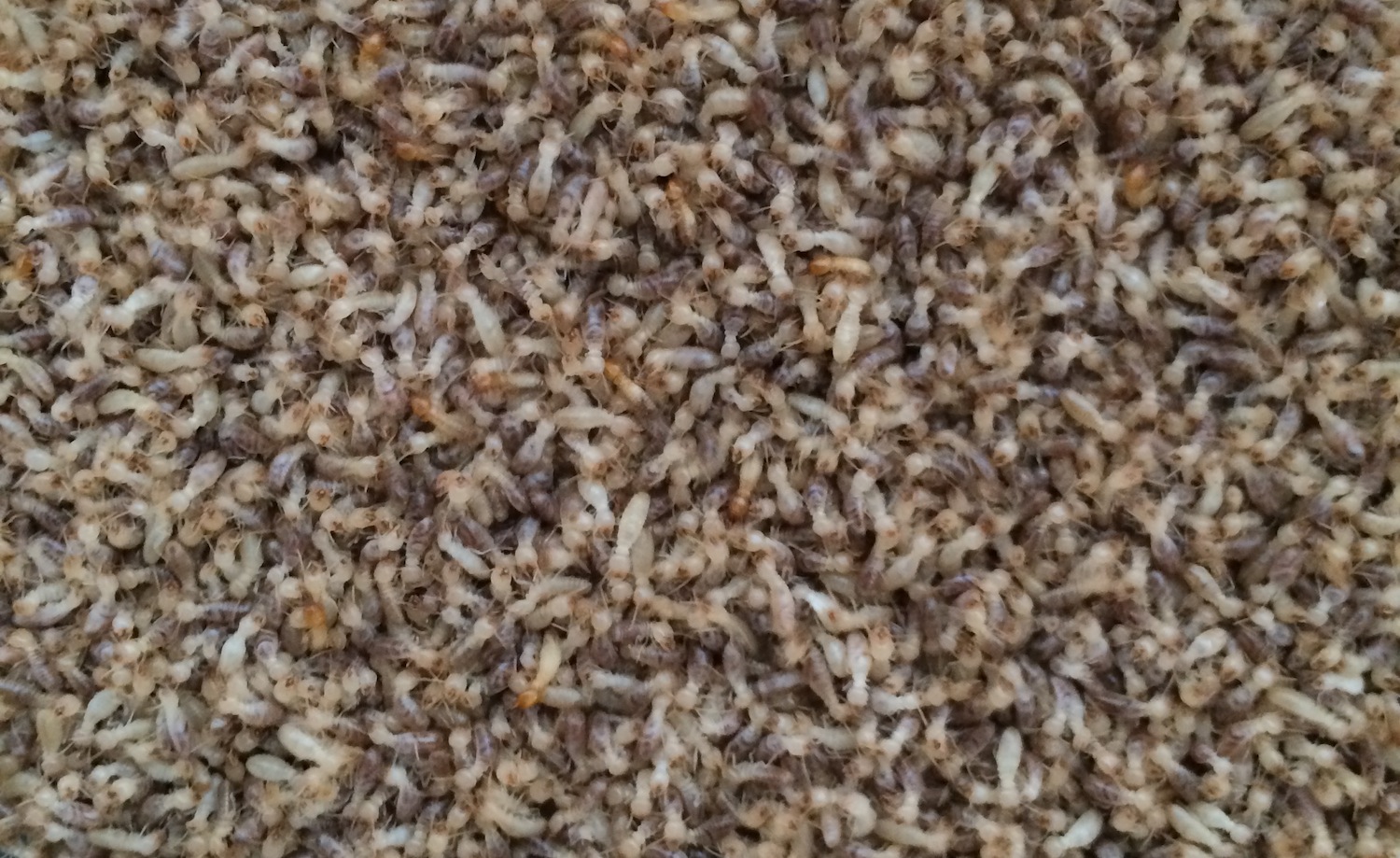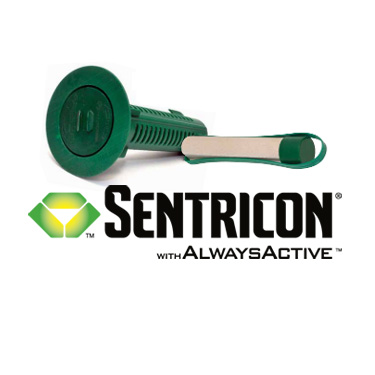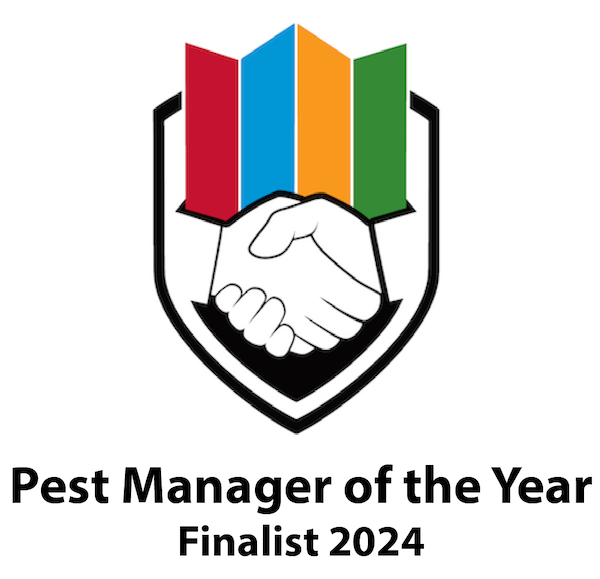How do termite baits work?

Termite baits are commonly used to control termites, but there is a lot of confusion about how they work. In fact, termite baits are actually one of the components of termite monitoring and baiting systems, which are used to protect homes from termites. Here we look at how these systems work and how effective they are in controlling termites and protecting buildings from termite attack.
Termite monitoring and baiting systems
Termite monitoring systems consist of plastic ‘stations’ which are placed in the ground every few metres around the building to be protected. Wood attractive to termites is placed in these stations. They don’t attract termites into the area, but any termites nearby will find these bait stations and start feeding on the wood, “intercepting” the termites before they get into your house.
This termite activity is picked up by the regular inspections carried out by your pest manager, normally every 6-12 weeks. If they find termites attacking the wood in a monitoring station, they then add termite bait to the station. It is this termite bait that will kill the termites.
What stops termites walking past the station and straight into the house?
These termite monitoring and baiting systems have been developed after years of research and have been on the market for over 20 years. The distance between each station is specified such that the chance of termites getting through the gap to the house without also attacking the monitoring station is very small indeed. With regular inspections part of the management of baiting systems, this is a very effective system for protecting buildings from termites.
But how does the termite bait actually work?
The termite bait consists of cellulose, a key component of wood, and a slow acting insecticide. This bait matrix is very attractive to the termites and they prefer to feed on the bait instead of the wood. The termites take the bait back to the nest where it is “processed” and fed to other members of the termite colony. It needs to be slow acting so that it can be spread throughout the colony before they realise there is a problem. After feeding on the bait it does not kill the termite immediately, instead it kills the termites when they try to moult (they shed their ‘skins’ to grow).
Using baits to eliminate termites from buildings
Although buildings can be protected using termite monitoring and baiting systems, termite baits are also widely used to eliminate termites from homes already under attack. Termite bait is placed in bait stations and attached to the areas inside the building where the termites are already feeding. The termites feed on the bait, taking it back to the nest and killing the colony.

Once the termite activity inside the house has been eliminated a termite management system – either a termite monitoring and baiting system or a termiticide treatment to the soil around the building – needs to be installed to help prevent future termite attacks.
How long do termite baits take to work?
Termite baits are designed to be slow acting – it ensures the termites cannot associate any ill effects with eating the bait and allows the bait to be spread throughout the nest, ensuring complete elimination. However, as the termites don’t all moult at the same time it can take at least 8-12 weeks for the colony to be eliminated. The length of time it takes depends on the size of the nest and the time of year (colony control is quicker in the warmer months).
Homeowners are sometimes concerned that termites continue to damage the building whilst waiting for the baits to work. However, as the termites are most likely to have been present for a while, any additional damage that may occur in the time it takes for the termites to be eliminated is unlikely to be significant. Although it may take a couple of months to completely eliminate the colony, the bait starts to impact the termite feeding within a couple of weeks, slowing and stopping the termite damage on your property.
Termite baits kill the colony
If you have a termite problem, you want to kill the termite colony not just the termites in the building. Unless you eliminate the colony, it will continue to be a threat to your property. Termite baits are the only proven way to kill a termite colony when the nest cannot be located – it is not always easy to locate the termite nest attacking a property! Although termite dusts and foams can be used to eliminate termites from buildings, it is very unlikely they will kill the colony.
What’s different about Sentricon AlwaysActive?
Sentricon AlwaysActive is the latest in termite protection systems and is different to the traditional termite monitoring and baiting systems described above.
Plastic monitoring stations containing a termiticide ‘rod’ (a highly attractive termite food plus slow acting toxicant) are placed in the ground around the property. There is no wood for monitoring the termite activity, the stations are ‘AlwaysActive’ so if the termites attack a station the bait gets to work immediately without the need to wait for the pest manager to add bait. These monitoring stations need to be inspected every 3 months by pest managers for termite activity, in order to replace any ‘eaten out’ bait stations with new ‘termiticide rods’.

AllPro Pest Control recommend using Sentricon AlwaysActive or the Trelona baiting system whenever a termite baiting and monitoring system is required.
Termite monitoring and baiting systems v termite soil treatments
The two key termite managements systems available to protect buildings from termite attack are termite monitoring / baiting systems and liquid termiticide soil treatments, which are applied to the soil around and under the building. The choice of treatment depends on the construction of the property, soil conditions, the nature of the termite attack and species present, as well as budget considerations and personal preferences.
In-ground baiting systems do have some benefits over soil treatments; as there are no chemicals in the ground they are unaffected by weather or flooding, and they are the best option from an environment and safety point of view – even the termite bait is non-toxic to mammals.
It is important to note that no one treatment can be used for all properties and property owners should be cautious of any pest control company that only recommends one option (without reasons). AllPro Pest Control carry out both types of treatments and are certified installers of the leading products and so will discuss with you all the available options for your particular situation.
More information on our termite treatments and termite treatment process please go to our termite treatments page
Leave a Reply
You must be logged in to post a comment.



One Comment